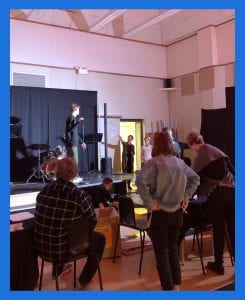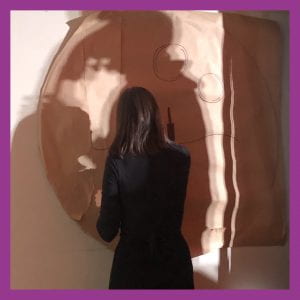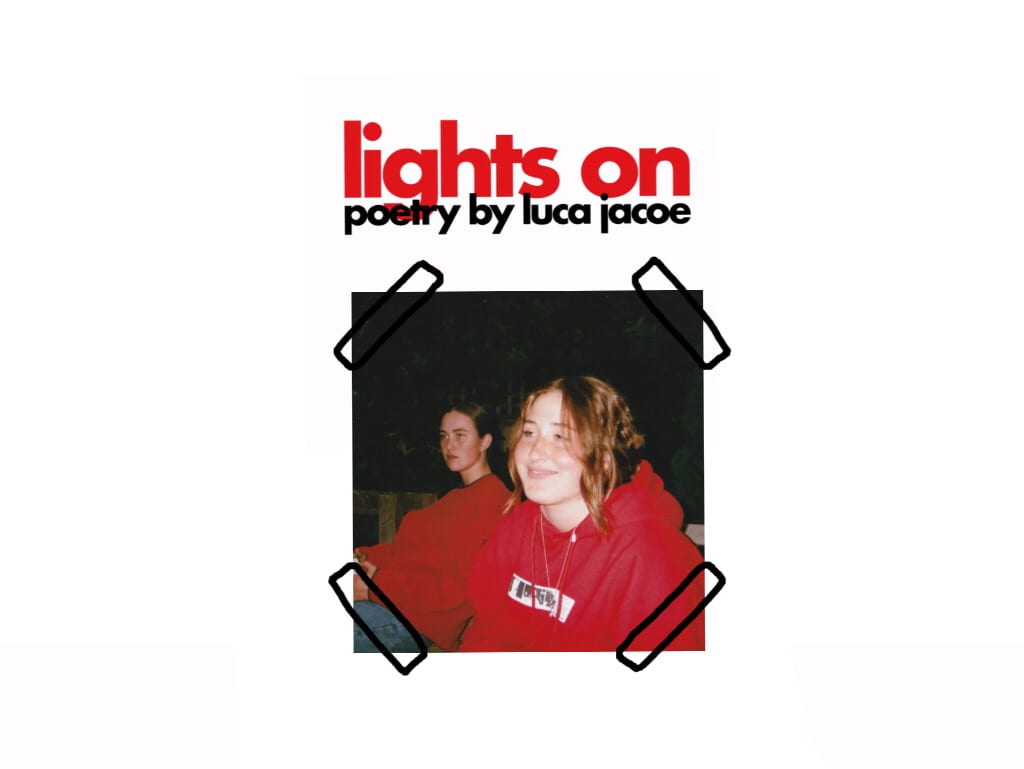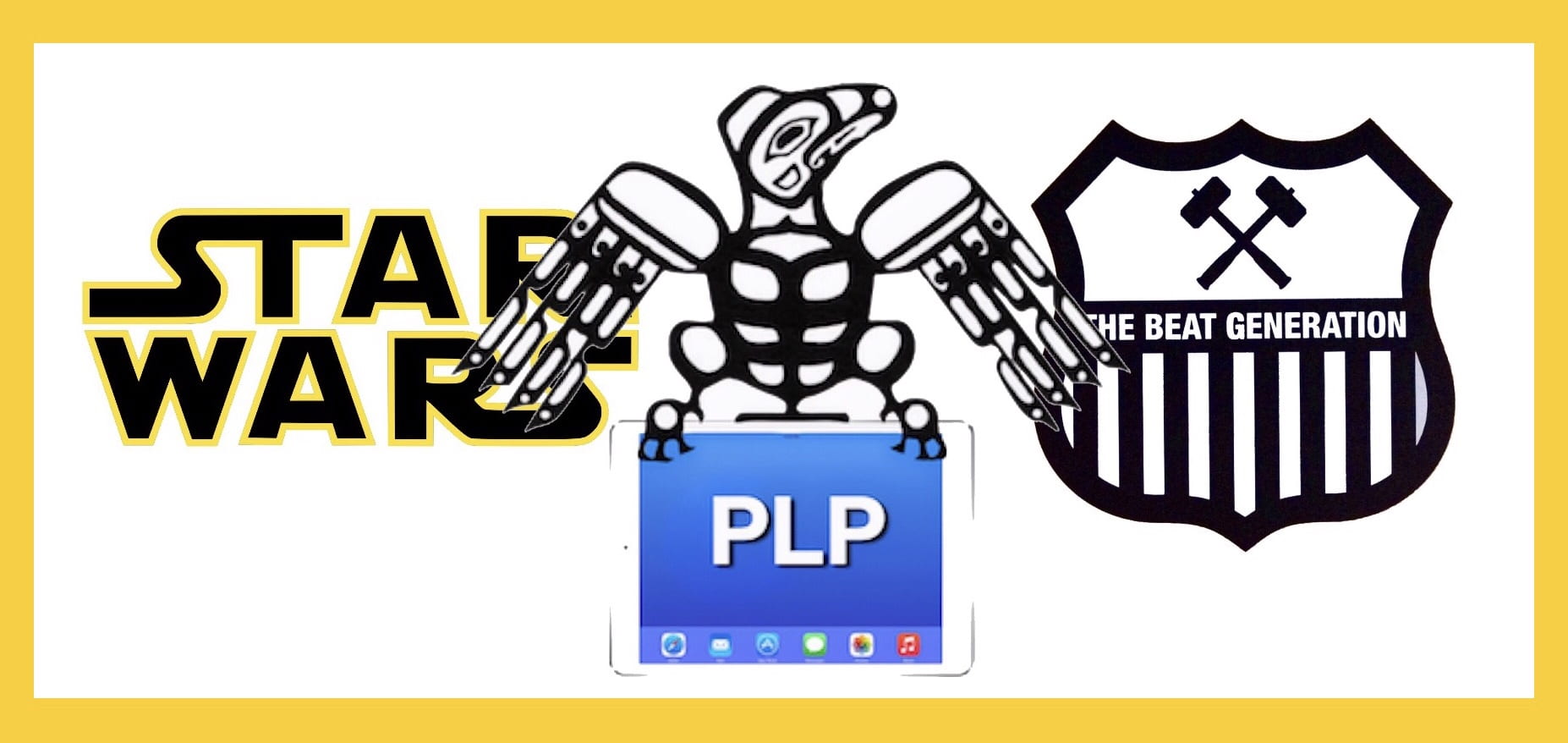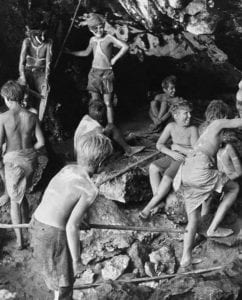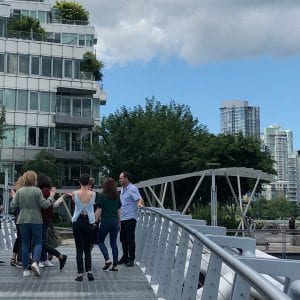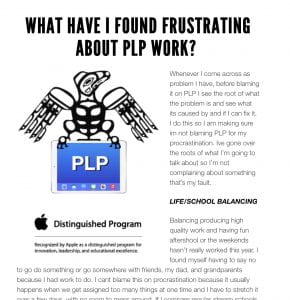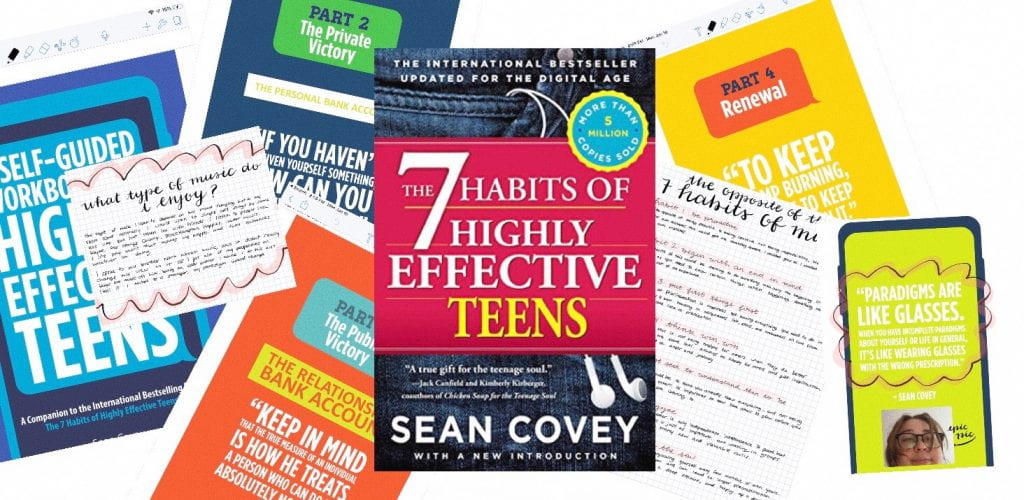Macbeth Macbeth Macbeth!
Hello! This is my first post about Macbeth, but definitely not the last. We are starting a new thing called “This Week I Learned” aka a TWIL post. We are learning a lot of new content Macbeth related, but also 1950’s related! So much new information has entered my brain in the past week, and I’m going to share it with you and the connections between Macbeth and the 1950s!

In grade 9 I did a project on the yin and yang and Taoism in Star Wars (learning portfolio post linked here.) Why am I telling you this you ask? Well the themes I learnt about during that project and what I took away from it still lives with me today.  Yin and yang touches on the questions about good and bad. What’s good? What’s bad? Are they the same thing? Do they compliment each other? This touches on our driving question for this project “Using Shakespeares Macbeth and the history of the 1950’s, how can we use film to explore the theme of appearance vs reality and comment on what’s changed and whats stayed the same?” The theme of good and bad in Macbeth and the 1950’s is very visible to me. Let me explain both sides of it.
Yin and yang touches on the questions about good and bad. What’s good? What’s bad? Are they the same thing? Do they compliment each other? This touches on our driving question for this project “Using Shakespeares Macbeth and the history of the 1950’s, how can we use film to explore the theme of appearance vs reality and comment on what’s changed and whats stayed the same?” The theme of good and bad in Macbeth and the 1950’s is very visible to me. Let me explain both sides of it.
1950s
We learnt a lot about the beginning of the Cold War, how it started, and the power involved. Also just post war, before the Cold War. Here are some of my notes, incase you want to read a very detailed and long amount of information connected to pre Cold War. If not, let me give you a very mini run down of a few (not all, that would be a long blog post) major things that happened and its consequences.
YALTA CONFERENCE
There was the Yalta conference which was where Franklin Roosevelt, Winston Churchill, and Stalin all met up to discuss how the post world war will work and how they will handle it. This was quite significant as it later caused a lot of problems.  This comes into the theme of good and bad/appearance vs reality. They were discussing peace, and had good intentions, yet it still caused conflict in the long run. To connect it to Macbeth, although he murdered King Duncan, he had good intentions. Good intentions don’t always lead to good outcomes though, and we see that in both Macbeth and the 1950s.
This comes into the theme of good and bad/appearance vs reality. They were discussing peace, and had good intentions, yet it still caused conflict in the long run. To connect it to Macbeth, although he murdered King Duncan, he had good intentions. Good intentions don’t always lead to good outcomes though, and we see that in both Macbeth and the 1950s.
THE UN
 The UN is created, this is made for the specific reason of world peace. There are 5 permanent members, and 10 elected non permanent members. Something significant that came from the creation of the UN is what they made Germany do. Germany was put to cleaning up the mess they made, and along with that their was the Neurobeurg trial which was the trial that led to the executions of many Germans who had high powers in the concentration camps and overall german crimes. Is killing the answer to killing? What’s good and bad? Was killing them the right thing to do? I think they made the right decision at the time, but I don’t know if it would be the same consequence now compared to the 50s. This connects to Macbeth a little bit by asking, was King Duncans murder the right thing to do?
The UN is created, this is made for the specific reason of world peace. There are 5 permanent members, and 10 elected non permanent members. Something significant that came from the creation of the UN is what they made Germany do. Germany was put to cleaning up the mess they made, and along with that their was the Neurobeurg trial which was the trial that led to the executions of many Germans who had high powers in the concentration camps and overall german crimes. Is killing the answer to killing? What’s good and bad? Was killing them the right thing to do? I think they made the right decision at the time, but I don’t know if it would be the same consequence now compared to the 50s. This connects to Macbeth a little bit by asking, was King Duncans murder the right thing to do?
MACBETH
Macbeth is all about power. Power leads to so many questions and so much confusion. Who should get it? Who’s better? Are they doing their job right? We ask ourselves these questions while reading Macbeth. In act 1, we hear a lot of quotes that fit into the theme of good vs bad/appearance vs reality perfectly.
QUOTE #1
“Fair is foul and foul is fair.” This is all about how appearance can be not what it seems. Is fair foul? Is foul fair? Are they the same thing? All that is good to someone, is foul to another. Looks can be deceiving is something we learn in Macbeth. An example in the book that kind of visualizes this quote is when Macbeth murders King Duncan. He’s killing him, but for a good reason? He wants to take the power, but not for an evil reason (that we know of.) Does the fact Macbeth will probably be a good king, balance out the fact he killed someone for it? I personally think no, King Duncan was doing perfectly fine at being the king, but if he was bad at his job and treated his people poorly, would the murder be justified? What fair is foul and foul is fair…
QUOTE #2
 “There is no art to find the minds construction in the face.” This is my favourite quote from the play so far. It relates to how Macbeth and Lady Macbeth could act normal (less normal for Macbeth) around King Duncan, when they both knew they were going to kill him tonight. There isn’t an instruction sheet, or rules to figuring out how someone is feeling/thinking from their face, and that’s what makes life interesting. This relates to the Yalta conference. Stalin was there, and even though he said he wanted peace, how were Churchill and Roosevelt supposed to know later on he would go against them? There is no art to find the minds construction in the face.
“There is no art to find the minds construction in the face.” This is my favourite quote from the play so far. It relates to how Macbeth and Lady Macbeth could act normal (less normal for Macbeth) around King Duncan, when they both knew they were going to kill him tonight. There isn’t an instruction sheet, or rules to figuring out how someone is feeling/thinking from their face, and that’s what makes life interesting. This relates to the Yalta conference. Stalin was there, and even though he said he wanted peace, how were Churchill and Roosevelt supposed to know later on he would go against them? There is no art to find the minds construction in the face.
OVERALL

Even though Macbeth and post war/Cold War were in dramatically different time frames, the overall themes in both connect well. This shows humans don’t really ever change deep down. The actual situations aren’t identical obviously, but the good vs bad theme, appearance vs reality theme, and the power thirsty individuals all make the 1950s and the 1500’s look more similar than we initially think they are.


























